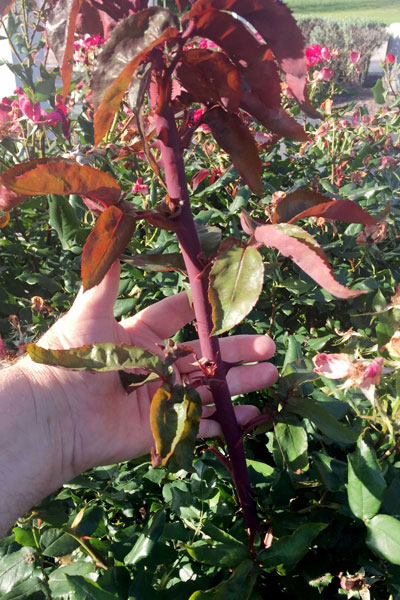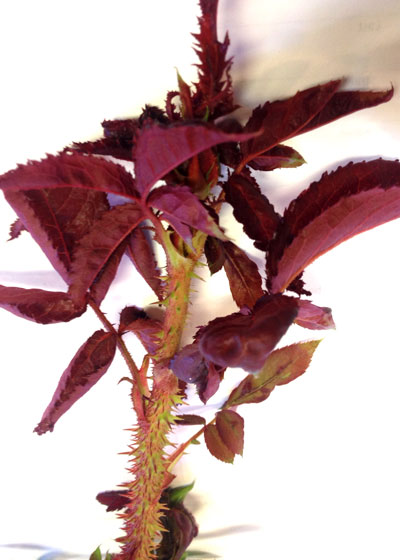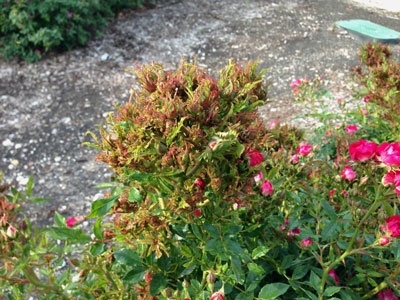Rose Rosette Virus Continues
This awful disease was first observed decades ago. Then it hung around, cropping up only occasionally in various parts of America until suddenly, five or six years ago, it hit North Texas rosarians broadside. The DFW area, for whatever the reason, became the epicenter of a horrific outbreak of rose rosette virus, and within a couple of years it invaded virtually every rose plant in the Metroplex. Those that weren’t infected, it appeared, soon would be.

Entire planting of Knock Out roses was lost due to RRV.
For all of that time, Dallas/Fort Worth has continued to be worst hit. Other cities have reported the problem, but to nowhere near the magnitude of the Metroplex. Concurrently, extensive study and research has been underway at Texas A&M and elsewhere to try to figure a work-around so that those of us who love roses can get back to our hobby.
Here are the facts as we know them…
• Rose rosette virus (RRV) is spread by a microscopic, wind-borne mite.
• We have no preventive or cure for either RRV or the mite.
• You will first notice extremely strong “bull” canes that almost look like they have herbicide damage.

“Bull” cane is several times larger and stronger than normal canes.
• New growth may take on a strong red cast, especially in red or pink varieties.
• Stems often develop five or ten times the normal number of thorns.

My friend Rick Williams shared this photo of an extremely thorny rose stem. This is typical of roses infected with RRV.
• Initially RRV will impact isolated branches and portions of infected plants, but rest assured – when one part of the plant is infected, all of the plant is infected.
• Flower buds look normal at first, but then they fail to open fully. Eventually they turn brown, much like buds with damage from thrips.

Notice how one stem is primarily affected initially. Its buds fail to open properly.
• Plants become more and more stunted, until after a couple of years, they eventually die.
• Pruning to remove visible symptoms does nothing to help the plant recover. In fact, it leaves the disease present in the garden, free to spread via the mites to others’ roses in adjacent yards.
• Replanting of roses into RRV-infested areas comes with a risk. While the disease does not persist in the soil if all of the roots have been removed, there probably are other roses in nearby landscapes that are still impacted. It’s probably better to switch to some other sources of color at least for the time being.
What we must do if we see RRV on our plants…
TAMU plant pathologists and expert rosarians tell us we must immediately remove any infected plant, roots and all. Plants should be put into plastic trash bags and sent to the landfill.
Note: Sprays are not effective in controlling or preventing the mites. Hydrogen peroxide and other home remedies are not effective and give false hope at a time when infected plants really should be removed instead.
